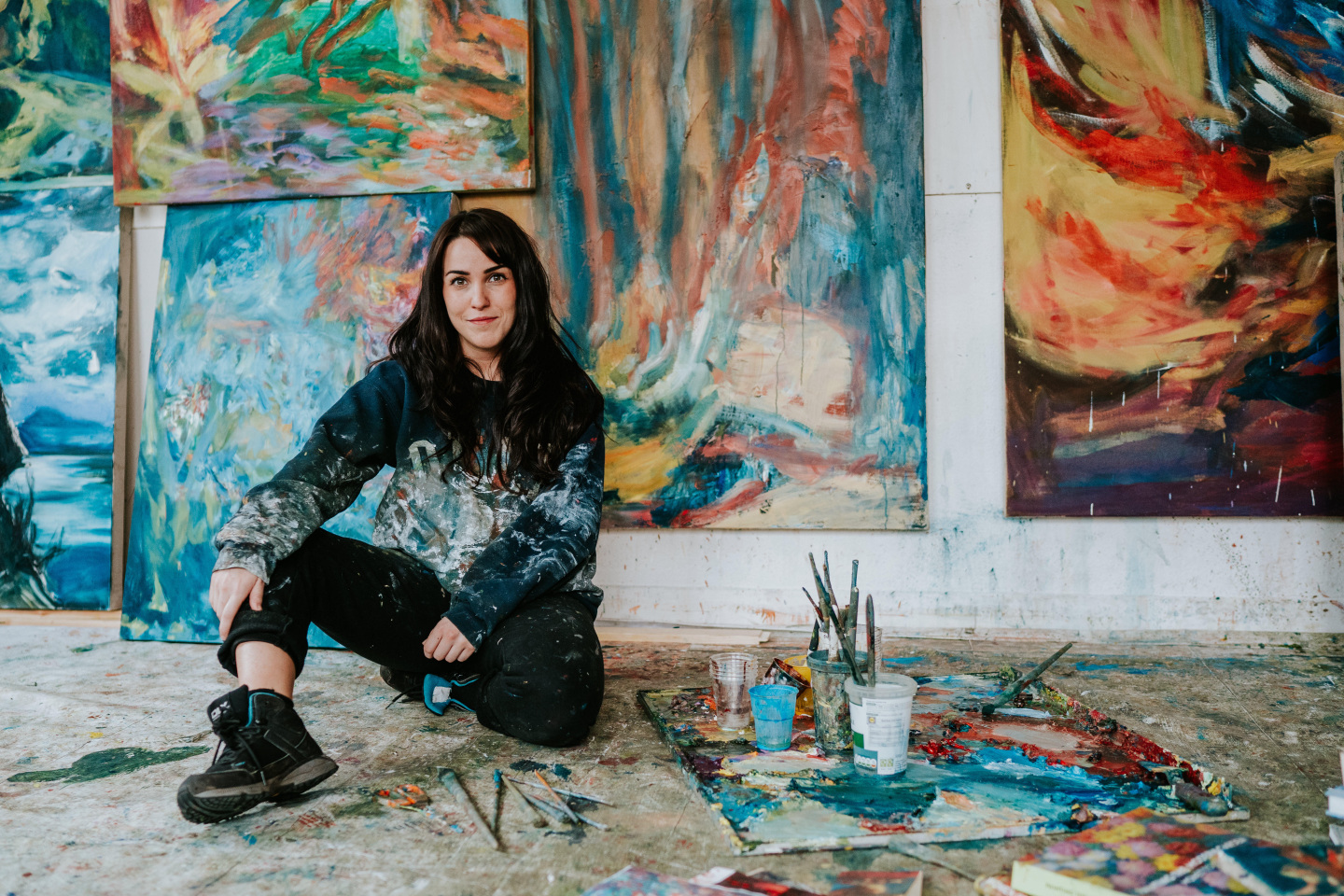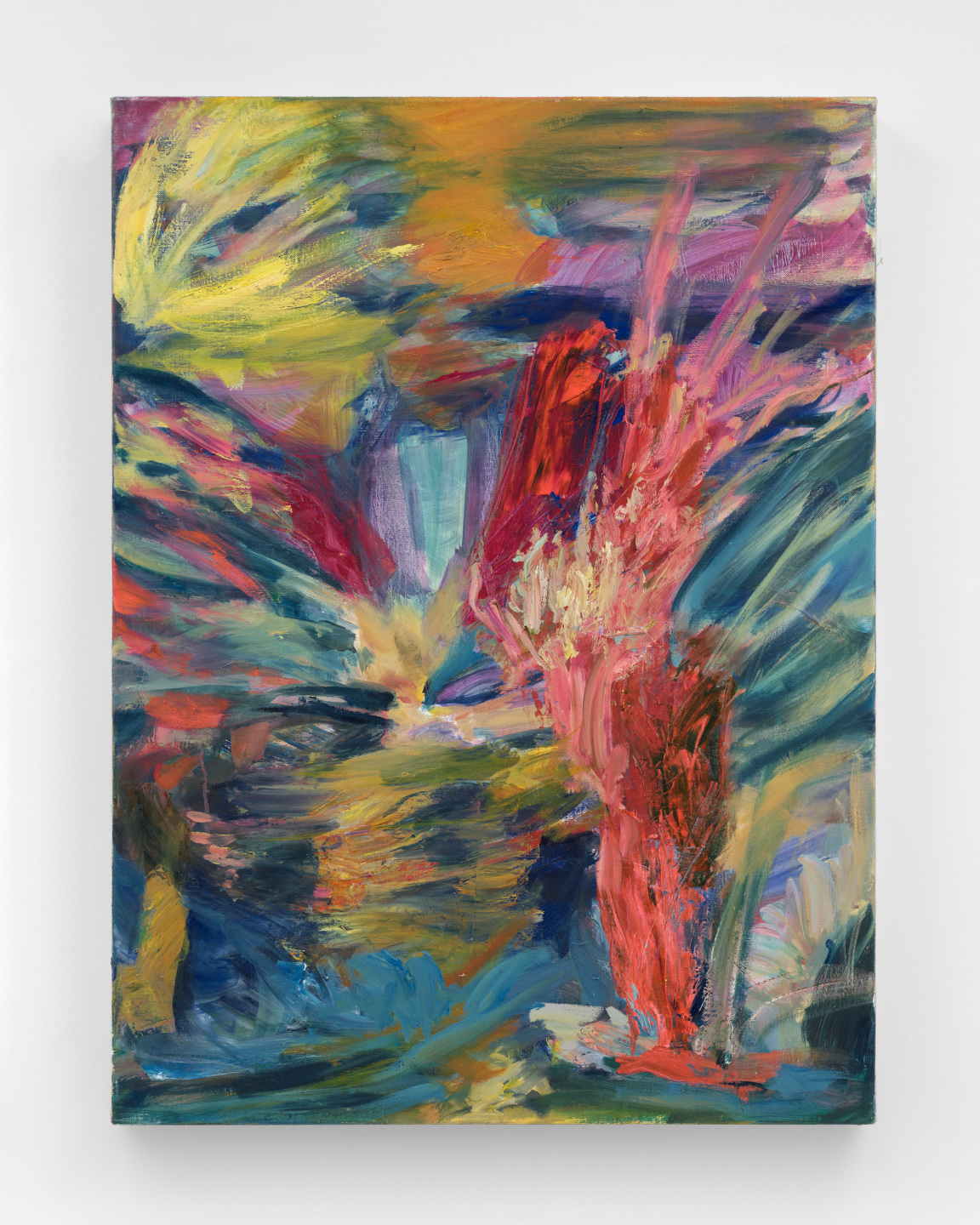It’s 2:00 AM in Nottingham, England and painter Sarah Cunningham is just beginning her workday. In her studio, the abstractionist is surrounded by current works in progress—massive, somewhat erratic, and chaotic bursts of color inspired by lagoons, fauna, and dreams, the latter only inhabiting the young artist’s mind in her brief moments of slumber. Instead, Cunningham, 28, prefers to stretch consciousness to the brink, sometimes forcing herself to stay awake for 40 hours, tapping into another dimension before painting. It’s in these moments of fragmented reality that she prefers to exist, but the journey here has been less than straightforward.
After earning her BFA at Loughborough University, Cunningham’s art practice was relegated to a nocturnal schedule. “During the day, I would drive a van carrying smoothie-making bikes all over the UK, a new city every day, to and from Nottingham. I was on the road all the time, often sleeping in service station car parks on the side of the motorway” she says. Though the gig was less than ideal, it did allow her to daydream. “It is so repetitive because you're just staring at the same road for so many hours a week: all I could think about was painting.” Working up to three jobs during the day, Cunningham would moonlight as an artist, painting literal moonlight punctuating figments of branches. Sometimes, she would spend up to three years on a single piece, staring at it, contemplating it during her drives, flipping it over and over until deciding it was done.
It wasn’t until a chance opportunity arose did Cunningham take the plunge into a full-time art career. In 2018, after coming across the La Wayaka Current Artist Residency in Armila—a remote city in Panama’s Guna Yala province—she found her path. However, she was blissfully unaware of how drastically her future was about to change.





Ahead of her journey to Armila, Sarah Cunningham lost her baggage. She had nothing she needed as she headed into the rainforest on a rickety plane. Yet, upon arrival, the indigenous community there gifted her clothing, food, shelter, and art supplies. She spent her days locked in the entangled forests, painting and attending dream ceremonies with locals. “They’d have meetings where they’d discuss their dreams together as a community,” she explains, “The way they interpreted their dreams was so informative for me. I don't have a dream then make a painting based on that, but I’ve noticed there is a dream somewhere in the painting, often halfway through or towards the end of my process.” Once her residency ended, Cunningham decided to pursue painting professionally, attempting to convey the rainforest’s emotional stamp that had consumed her thoughts.
Though they lack any literal representation of tropical fauna, Cunningham’s paintings evoke the same organized pandemonium of nature’s strata. “There's always a struggle when you think about the forest,” she explains. “You’d initially believe everything is working together, but all the plants are fighting to survive, fighting to get light.” Her use of light and often violent brushstrokes do mirror the chaos of natural ecosystems, and yet, cleverly positioned moments of space allow the eye to breathe. It’s an intelligent decision reflected in various uses of scale and color—each piece somehow terrifying and optimistic.

In her first United States solo show, “In Its Daybreak, Rising,” on view through March 12 at Almine Rech Gallery’s New York outpost, Cunningham delivers a reverent performance for a young artist, even more astounding as her current studies at the Royal College of Art have yet to conclude. In a market overwhelmed with large-scale work, Cunningham plays with size. Her show is the debut of her largest piece to date, a hypnotizing three-panel painting titled A Wounded World Still Holds Us (2022), while the smallest piece, Echo Chamber (2021), can be held in your hands. “I love the smaller pieces, they’re a microscopic view of the forest,” Cunningham explains, and they often take her the longest time to paint. It’s a thoughtful play on abstraction, a little moody, a lot colorful. With the show selling out before its first weekend, it seems the dawn of Sarah Cunningham is just on the horizon.










 in your life?
in your life?

